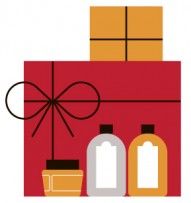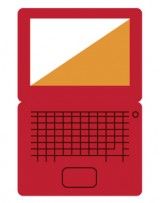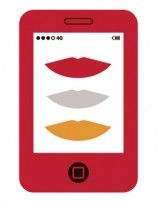BEAUTY IN 3D
Cosmetics at a click of a button became a reality when Harvard graduate Grace Choi unveiled the innovative Mink printer earlier this year. Using 3D printing, the Mink produces colour cosmetics from powders to lipsticks, using the pixel colour code derived from your camera, smart device or online to create any shade and will be marketed around the $300 mark. Phill Dickens, professor of manufacturing technology at Nottingham University, says 3D printing is more likely to revolutionise the science of skincare rather than the spectrum of shades we wear. “Just as we will soon be able to print livers, labs will be able to print skin to test on,” he explains.
SAMPLE REVOLUTION
Beauty boxes are lending sophistication to sampling and beauty-curious consumers are enlisting Glossybox, Latest in Beauty and Birchbox to send them curated selections of sample-sized products to try each month. “Subscribers get to inject new products into their regime, while brands receive direct market research from engaged consumers,” says Rachel Kavanagh, managing director of Glossybox. Similarly the social-network whatsinmyhandbag.com send targeted samples to their 120,000 members based on the profile of their virtual beauty cabinets. What’s certain is the appeal of sampling lies in experimentation as Net-a-Porter’s £30 boxes quickly sell out.
NEW ‘AVON’
Social selling is the new door-to-door phenomenon, empowering entrepreneurial sellers, as well as consumers, who can shop from the familiarity of their home. Launched five years ago, NYR Organic now hosts 40,000 parties with total sales reaching £40 million, nearing that of their traditional stores, while Jo Malone’s house parties are key to their success in the United States. “The integrity lies in the interaction between groups of friends who are discovering beauty in the same way they might encounter a new beach read at their book club,” says Nancy Cruickshank, founder of MyShowcase, which has 120 independent stylists selling their discerning selection of insider brands.
VIRTUAL MAKEOVERS
Makeovers are virtual for the “connected” consumer. Launched in June, L’Oréal Paris’ new Makeup Genius app is a first, turning the front-facing iPhone and iPad camera into a mirror allowing you to virtually apply any of their 300 colour products. “With a click of a button, we’ve enabled women to customise their options and make better buying decisions,” says Guive Balooch, director of L’Oréal digital hub, the Connected Beauty Incubator. The ease of apps is also inspiring change in-store. Ahead of the game, the Burberry Beauty Box has digital make-up charts and a techy nail bar that previews nail colours against customers’ skin tones.
RETAIL THEATRE
Retail space is increasingly about theatre. Selfridges set the bar with its recent Beauty Project, which saw the store alive with everything from debates to a fragrance lab that matched scent suggestions with your psychological profile. Yet a recent TNS survey for Google showed the UK has the highest percentage of people making purchases with their smartphone compared with18 other European countries, meaning digital is vital to enhance in-store interactions. The Crown Estate, which manages London’s Regent Street, is launching an app spearheading the use of iBeacons. Using Bluetooth low energy (BLE), iBeacons can communicate directly with customers’ phones, alerting them to offers on the high street.





